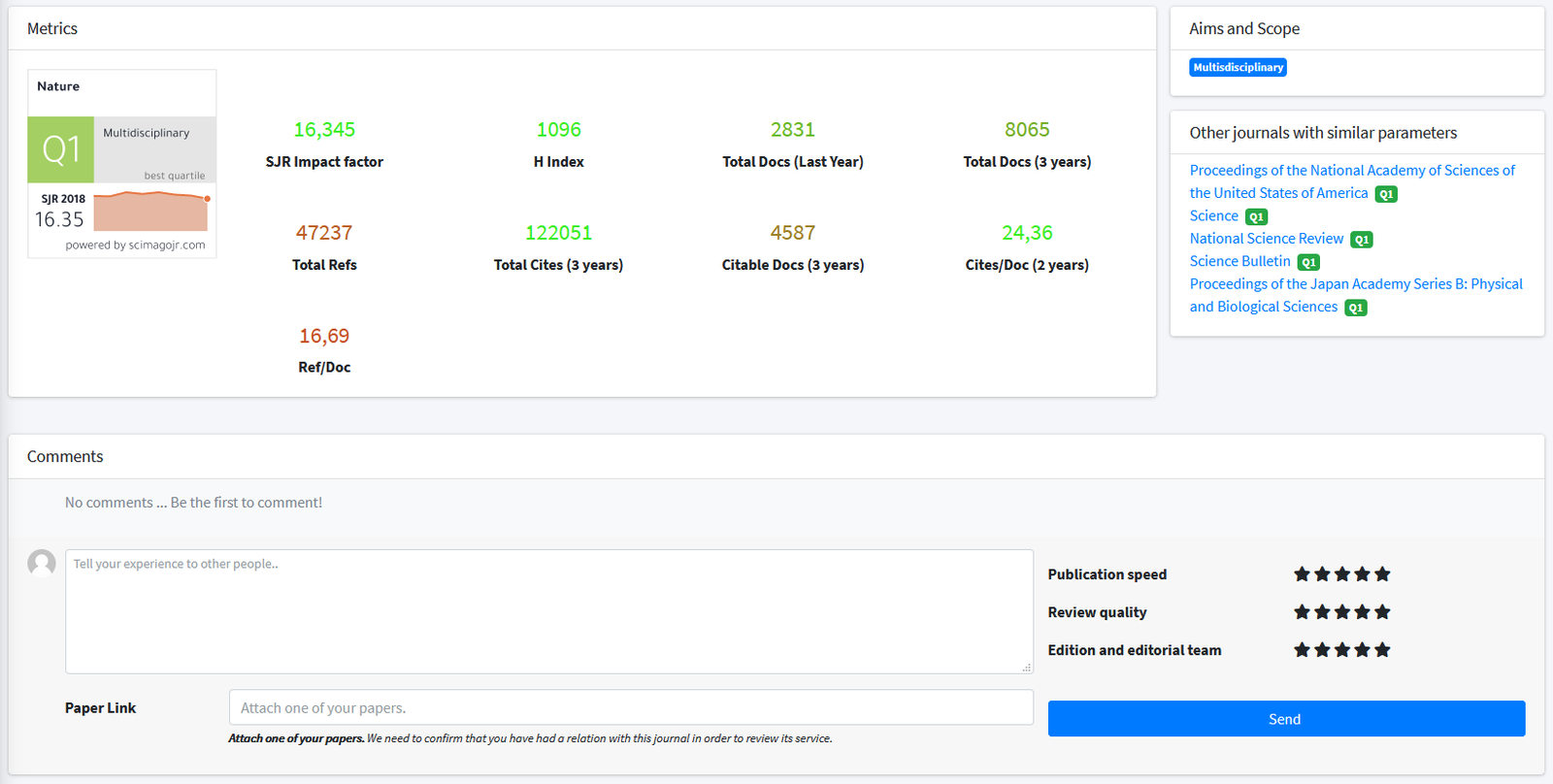JBIC Journal of Biological Inorganic Chemistry Q2 Unclaimed
This Publication of the Society of Biological Inorganic Chemistry (SBIC) covers advances in the understanding of systems of metals in biology at the biochemical, molecular and cellular levels. Synthetic analogues mimicking function, structure and spectroscopy of naturally occurring biological molecules are also of interest to the journal. The journal publishes original articles, mini-reviews, reports and commentaries on debated issues.Benefits for Authors:- No Page Charges- No Fees for Online and Print Color Images- Optional Gold Open Access through Springer Open Choice- Green Open Access in line with major funder mandates- Share your article freely through SharedIt
Official journal of the Society of Biological Inorganic Chemistry since 1996.
JBIC seeks to promote the field of biological inorganic chemistry internationally in order to understand biological function at the atomic level.
JBIC ranks 9th (2019) in the category Chemistry, Inorganic & Nuclear (Q1) It has an SJR impact factor of 0,556.
JBIC Journal of Biological Inorganic Chemistry focuses its scope in these topics and keywords: rutheniumii, metal, metalloproteinase, movementengineering, nextgeneration, peptidesrole, potency, proteinglutathione, reactivitybenzothiazole, relation, ...
Type: Journal
Type of Copyright:
Languages: English
Open Access Policy: Open Choice
Type of publications:
Publication frecuency: -


2690 €
Inmediate OANPD
Embargoed OA0 €
Non OAMetrics
0,556
SJR Impact factor111
H Index61
Total Docs (Last Year)271
Total Docs (3 years)3730
Total Refs831
Total Cites (3 years)256
Citable Docs (3 years)2.57
Cites/Doc (2 years)61.15
Ref/DocOther journals with similar parameters
Cytokine: X Q2
Journal of Cell Communication and Signaling Q2
Molecular Genetics and Metabolism Q2
Molecular and Cellular Endocrinology Q2
International Journal of Biochemistry and Cell Biology Q2
Compare this journals
Aims and Scope
Best articles by citations
The many highways for intracellular trafficking of metals
View moreStructural study of copper(I)-bleomycin
View moreNucleation of calcium oxalate crystals on an imprinted polymer surface from pure aqueous solution and urine
View moreModels of the bis-histidine-coordinated ferricytochromes: Mossbauer and EPR spectroscopic studies of low-spin iron(III) tetrapyrroles of various electronic ground states and axial ligand orientations
View moreSynthesis, structure analysis, solution chemistry, and in vitro insulinomimetic activity of novel oxovanadium(IV) complexes with tripodal ligands containing an imidazole group derived from amino acids
View moreSynthesis, structure and biological evaluation of ruthenium(III) complexes of triazolopyrimidines with anticancer properties
View moreBiophysical characterization and molecular modeling of the coordinative-intercalative DNA monoadduct of a platinum-acridinylthiourea agent in a site-specifically modified dodecamer
View moreStudy of the role of Mg2+ in dsRNA processing mechanism by bacterial RNase III through QM/MM simulations
View moreAcetyl-coenzyme A synthase: the case for a Nip0-based mechanism of catalysis
View moreA mononuclear molybdenum(V) mono-oxo biphenyl-2,2'-dithiolate complex in which the metal resides within a cleft formed by the ligands and that exhibits N-H...S hydrogen bonding in the solid state
View moreCarbamoylphosphonate-based matrix metalloproteinase inhibitor metal complexes: solution studies and stability constants. Towards a zinc-selective binding group
View moreCatalysis by methyl-coenzyme M reductase: a theoretical study for heterodisulfide product formation
View moreChimeric HTH motifs based on EF-hands
View moreThe problem of a solvent exposable disulfide when preparing Co(II)-substituted metallo-beta-lactamase L1 from Stenotrophomonas maltophilia
View moreTernary Gd(III)L-HSA adducts: evidence for the replacement of inner-sphere water molecules by coordinating groups of the protein. Implications for the design of contrast agents for MRI
View morePreparation and reactivity studies of synthetic microperoxidases containing b-type heme
View moreIdentification of FeS clusters in the glycyl-radical enzyme benzylsuccinate synthase via EPR and Mossbauer spectroscopy
View moreAutocatalytic activation of acetyl-CoA synthase
View moreCrystallographic determination of reduced bovine superoxide dismutase at pH5.0 and of anion binding to its active site
View moreTargeted site-specific cleavage of HIV-1 viral Rev responsive element by copper aminoglycosides
View moreA further investigation of the cytochrome b
View moreThe iron-sulfur center of biotin synthase: site-directed mutants
View moreComparison of the cleavage profiles of oligonucleotide duplexes with or without phosphorothioate linkages by using a chemical nuclease probe
View morePredominant cleavage of proteins N-terminal to serines and threonines using scandium(III) triflate
View more
 If you are a journal editor you can claim the journal profile and add new information for the visitors.
If you are a journal editor you can claim the journal profile and add new information for the visitors.
Comments